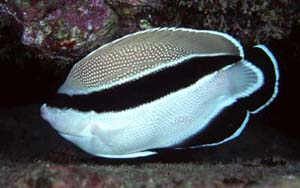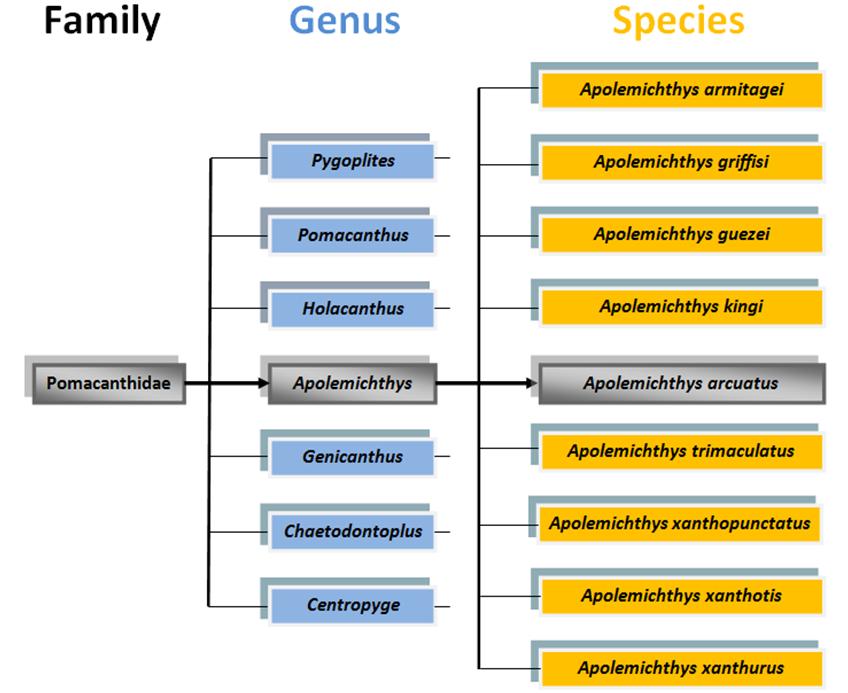Classification
Domain – Eukarya
Kingdom – Animalia
Subkingdom – Bilateria
Branch – Deuterostomia
Phylum – Chordata
Class – Actinopterygii
Order – Perciformes
Family – Pomacanthidae
Genus
– Apolemichthys
Species –
Apolemichthys arcuatus
Domain Eukarya because it has membrane bound organelles, most importantly, a nucleus.
Kindom Animalia because it is heterotrophic, multicellular, motile at some point of development and lacks cell walls.
Subkingdom Bilateria because it has bilateral symmetry allowing for cephalization.
Branch Deuterostomia because the radial cleavage created in the morula stage of development, the resulting anus from the blastopore, and the way the mesoderm forms during development of the coelom.
Phylum Chordata because of the presence of a notochord, dorsal nerve tube, pharyngeal pouches, post anal tail, and endostyle (precursor to the thyroid gland) at some point in development.
Class Actinopterygii because it is a ray-finned fish that has horny spines (rays) encased by webs of skin (fins).
Order Perciformes because it is a perch-like fish. This class often has pelvic fins positioned by the throat or belly which have one spine and up to five soft rays, as well as dorsal and anal fins. These dorsal fins are often a separated in two different regions separated by the type of ray they are.
Family Pomacanthidae because it is a marine angelfish with vibrant colors and often found around shallow reefs.
Genus Apolemichthys because the fish in this genus all have a similar body style with a very similar number of dorsal spines, anal spines, dorsal soft rays, and anal soft rays.
Apolemichthys arcuatus describes a marine angelfish that is reef associated and has a unique body style with an arching black band from its anterior end to its posterior end.

This Phylogenetic Tree begins in the
level of Family in the order of classification. Each
branch is created from a distinctive trait that separates
each level from each other. The middle of this tree
highlights the bandit angelfish's path throughout tree with
respect to each level of classification.
The first branch in the tree between the Family and Genus
level is created to show each Genus of Marine Angelfish.
Each Genus has a branch that breaks off of it to show the
Species level, however, the branches are not shown because
of the focus solely on the bandit angelfish. As for
the second branch between the levels of Genus and Species,
it describes the break from a specific Genus,
Apolemichthys in this case, due to the distinguishable
traits each fish species has. This was previously
discussed directly above the Phylogenetic Tree under the
title Apolemichthys arcuatus.